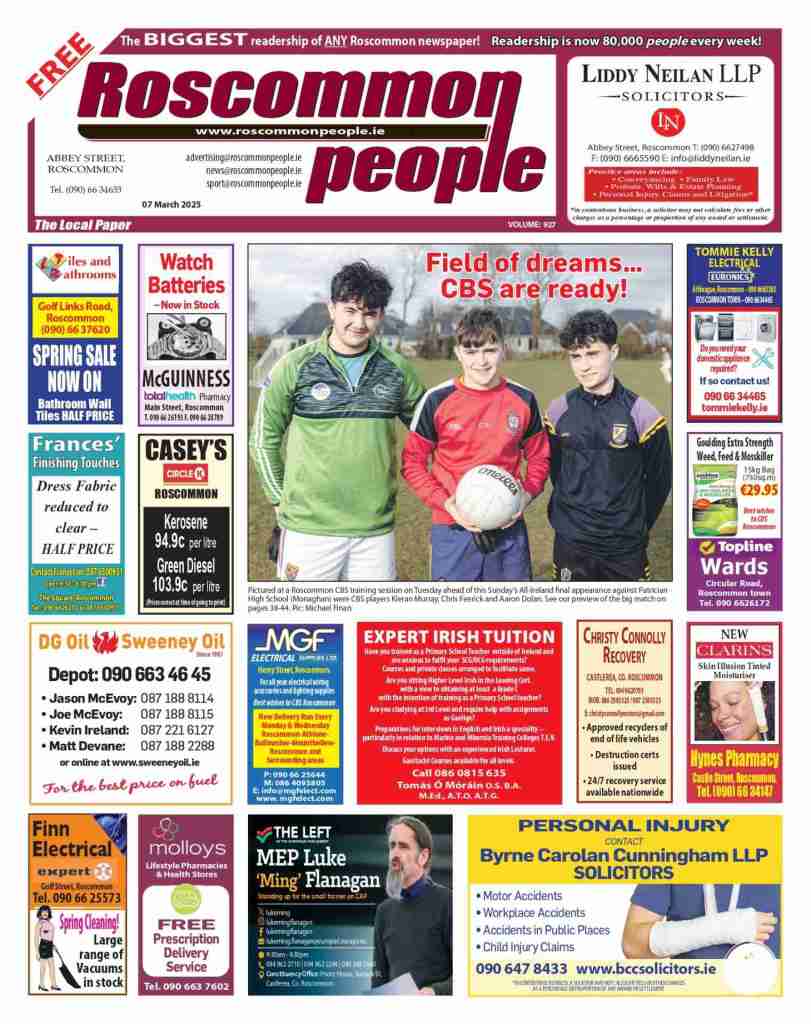Beyond the ‘cúpla focail’ – Irish language’s place in modern Ireland
“How do you say ‘sorry’ in Irish?”, I overheard an American girl ask her friend in a shop recently.
Her friend tells her it’s “tá brón orm”, adding that its literal translation means ‘sadness is upon me’. This interests the American girl, who jokes that it’s a dramatic but oddly poetic way to say it. They go back and forth like this for a while, the Irish friend giving her American visitor some more titbits about Irish vocab; “The word for hello means ‘God be with you’”, “’Please’ is translated as ‘with your will’” etc.
Eventually, the Irish friend asks the American why she wanted to know how to say sorry in the first place. She responds that she thought it’d be good to have a few phrases, that it might come in handy while she’s over. Her friend nods, before resignedly telling her most Irish people wouldn’t use ‘tá brón orm’ in any case; they’d just say ‘sorry’.
She wasn’t wrong of course. For the large majority of us, Gaeilge doesn’t feature much in our daily lives or conversations. We all have the ‘cúpla focail’ as it were, but not much beyond that, and even still, we aren’t very likely to make frequent use of those focail that we do know.
The whole exchange between these two girls reminded me of a short film we used to watch back in secondary, ‘Yu Ming Is Ainm Dom’, which tells the story of a young Chinese man who travels to Ireland. In preparation for his visit, he takes it upon himself to learn how to speak Irish, only to quickly find out that no one in Ireland seems to understand him when he speaks ‘as Gaeilge’. He too, like the American visitor I’d overheard, assumed Ireland retained some use of our native tongue.
The movie culminates when he strikes up a conversation ‘as Gaeilge’ with an older Irishman, who tells him that the reason he’s been having such communication troubles is because Irish isn’t our primary language, English is. The older man tells him the language is only really spoken in a few rural regions. And so Yu Ming gets a job in Connemara, and the film ends happily.
After all, it is places like Connemara and other Gaeltacht areas that provide refuge for the preservation of the Irish language. We do our best to protect and promote Irish by teaching it in schools, and plastering it on our road signs, but where Irish truly thrives is in these areas where it is spoken as the primary language.
Indeed, beyond these areas, there is often a sense of pessimism apparent when people discuss the longevity (or lack thereof) of the tradition of speaking Irish. Some will say that there is no use in trying to retain the Irish language, that its era has come and gone. But the linguistic significance of the Irish language did not go away once we started speaking English.
Even Irish people who speak English exclusively aren’t totally unsubscribed from the influence of Gaelige, since technically speaking, in Ireland we speak Hiberno-English. Hiberno-English is a dialect native to the island, which differs from standard English due to the fact that when we changed our primary language, we kept some Irish grammar, phrases, and pronunciation. It’s why we have words like ‘yous’/‘yiz’ to parallel Irish’s ‘sibh’. It’s why we might say “there is a lot of cars” instead of “there are” – because in Irish, you would use ‘tá’ in place of both.
Nevertheless, there is a perceivable tug and pull in conversations around language in Ireland, people swinging between the pragmatism of prioritising English or the romanticism of reinvigorating Irish. And oftentimes, the conversation is relegated to a discussion about curriculum – whether or not to keep Irish as a mandatory subject, how the language is taught in general – but the issue isn’t confined to how much we do or don’t teach in schools.
For example, our Gaeltacht areas are regarded as Gaeilge’s safe havens. But in recent years, these places have begun to fall victim to the impacts of tourism. Tourist accommodation has come to dominate the rental market in these areas, to the point where local people are being pushed out. And with this increased migration of native Irish speakers, and the increase in tourists leading to more English being spoken, the Irish language is becoming less and less part of the fabric of these areas.
There is an enormous amount of cultural significance to our language and the practice of it. However, it’s also true that a shift towards Irish as a more primary language would be regarded as largely impractical. As such, discourse around instilling Irish back into our culture is often shut down instantly and cynically. But there is undoubtedly space to appreciate our native tongue more without overhauling everything.
To some degree, we are a bilingual country. But as we veer further away from the practice of Irish in our everyday lives, as we continue to let our Gaeltacht areas deplete, and all the while continue to expose ourselves to solely English media, it’s inevitable that the Irish language will fade. We ought to do more to protect Irish-speaking areas, promote Irish-language media (such as the new ‘Róise & Frank’ film, which is meant to be quite good I hear), and come up with creative ways to weave Irish back into our everyday lives.
We owe it to ourselves to take back our native tongue, and embrace all the culture that comes along with it. We’re very conscious of how much England’s occupation and impact eroded so much of our culture, and safeguarding Irish is one way to go about righting that wrong. After all… “tír gan teanga is tír gan anam”.






